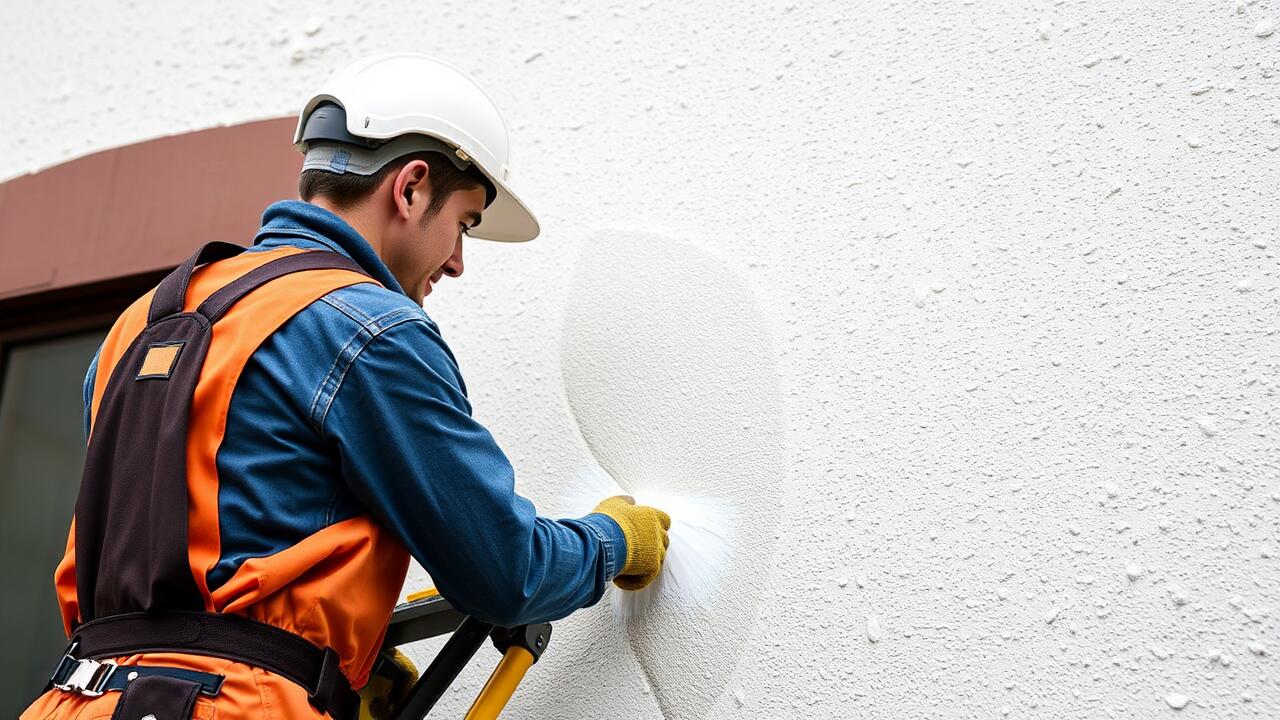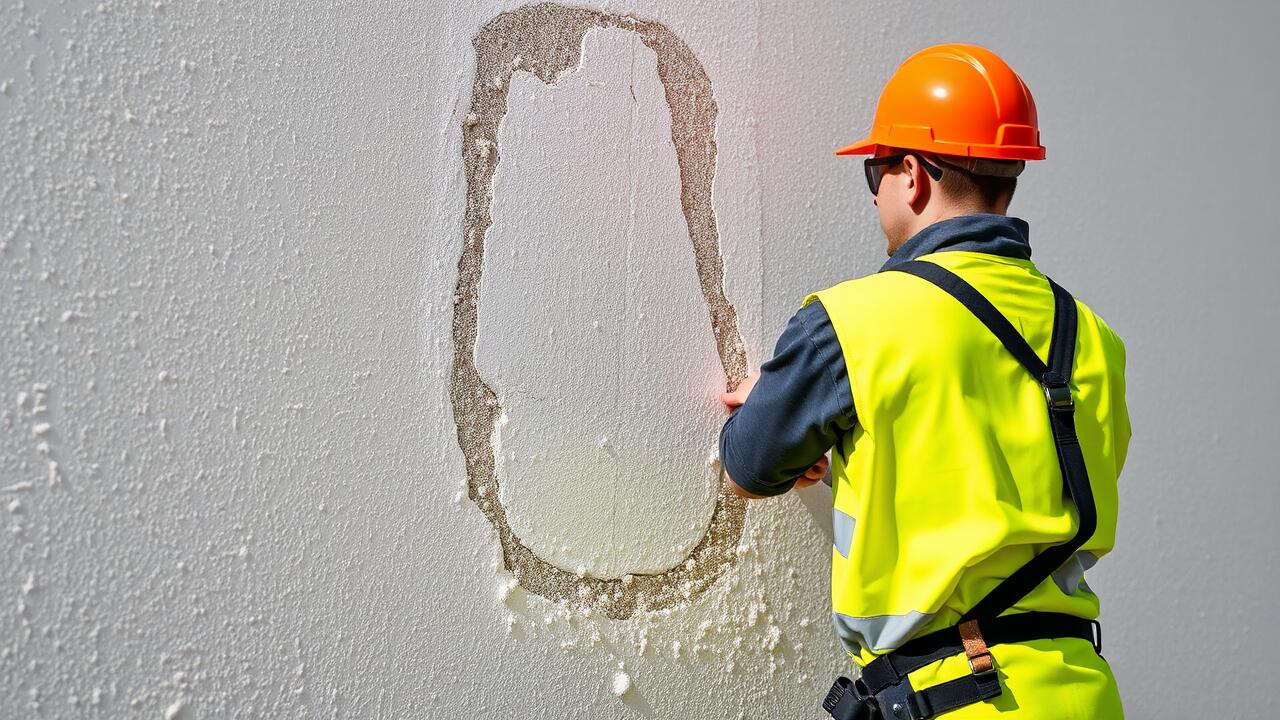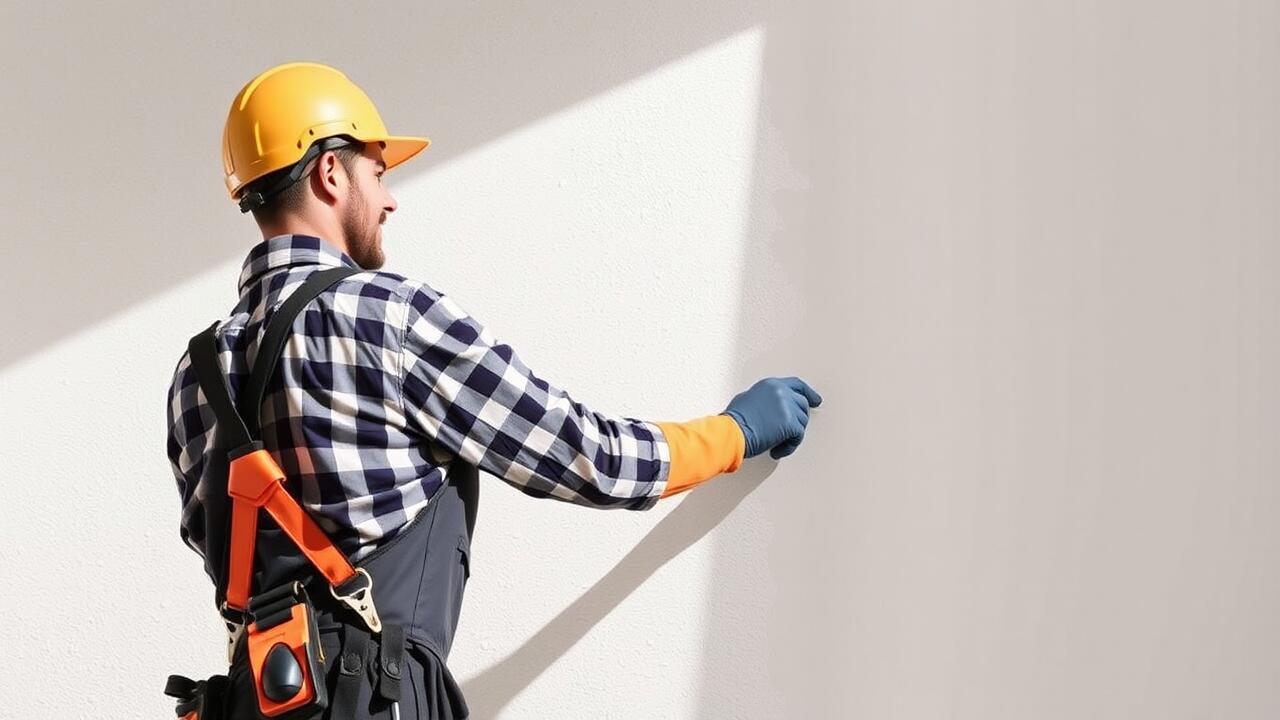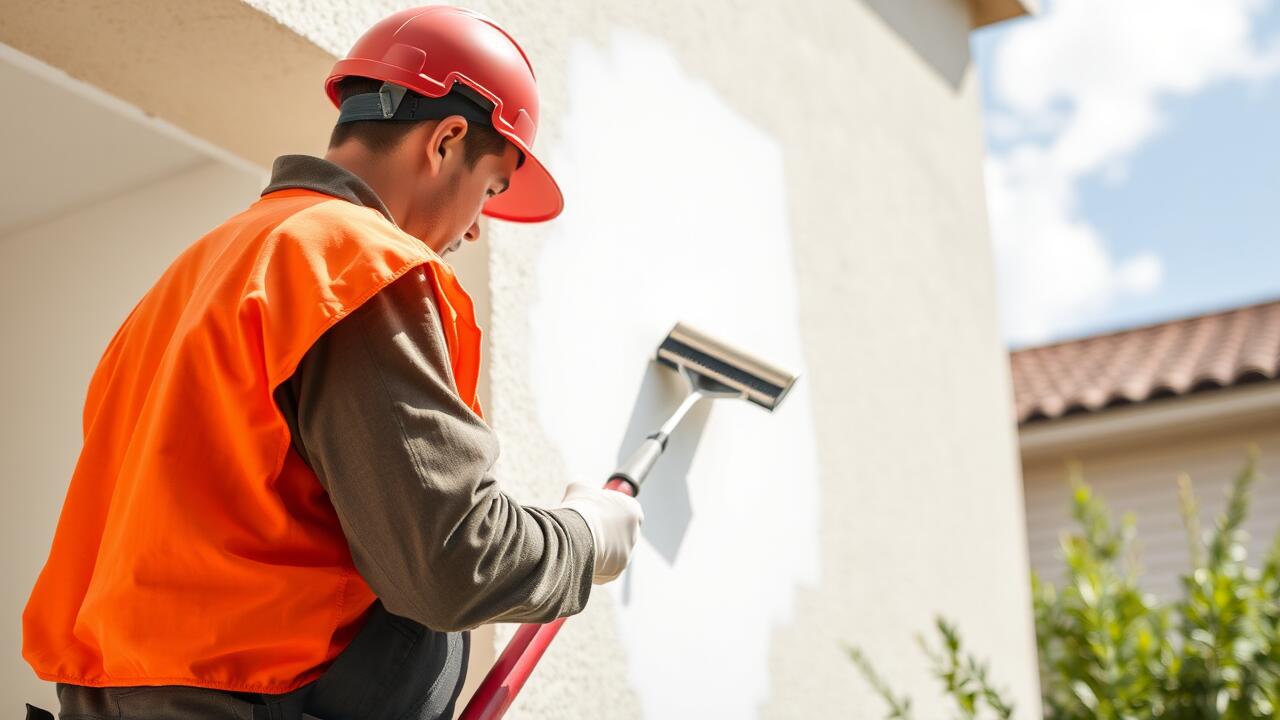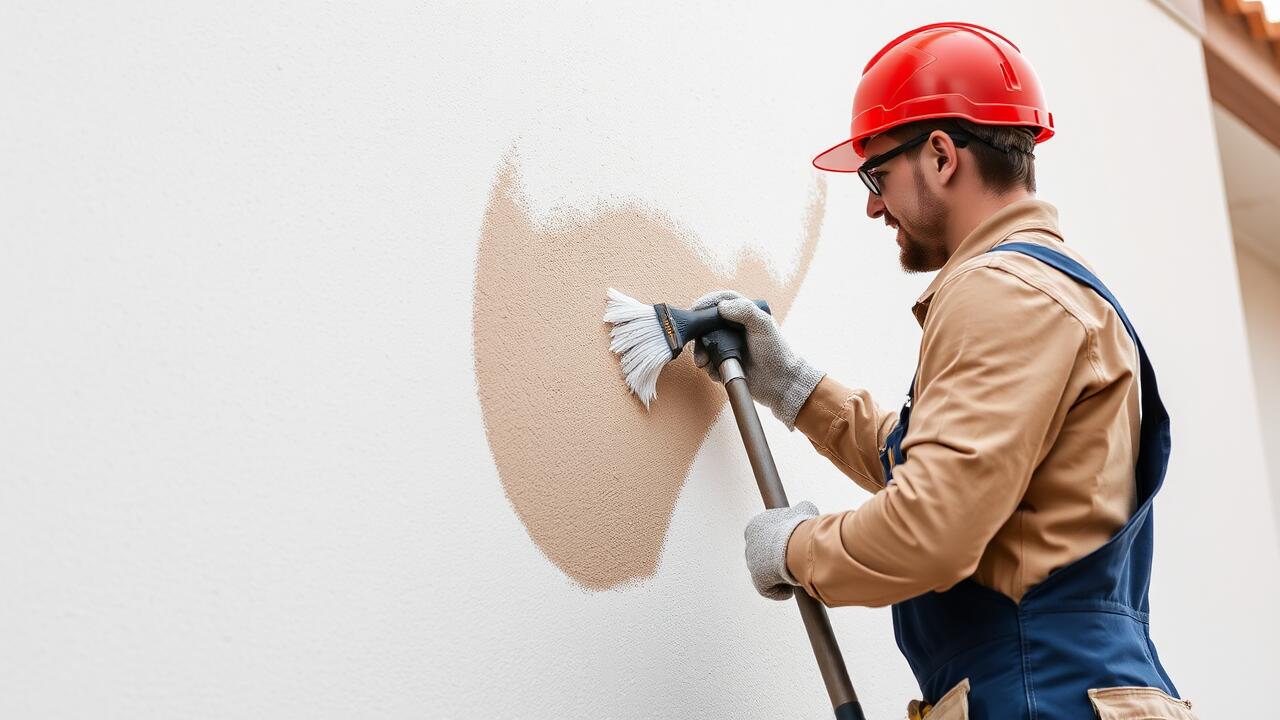
Equipment Needed for Rolling
When preparing for rolling paint on stucco surfaces, having the right equipment is essential for achieving a smooth finish. A high-quality roller with a nap suitable for textured surfaces will allow for better paint coverage. In addition to a roller, you should gather a sturdy roller frame, a paint tray, and an extension pole to reach higher areas easily. For larger projects, consider using a roller with a wider width to speed up the application process.
In the context of Stucco Painting in Studio City, Los Angeles, the local climate can influence your choice of paint and tools. A paint that adheres well to stucco while also withstanding the elements is crucial for long-lasting results. Additionally, having drop cloths to protect surrounding areas from paint splatter will make cleanup easier. Proper preparation ensures that the paint adheres effectively, enhancing both the appearance and durability of the stucco surfaces.
Choosing the Right Roller and Tray
Choosing the right roller and tray is crucial for achieving an even coat when painting stucco surfaces. When working with textured materials like stucco, a roller with a thick nap is recommended. This type of roller allows paint to effectively reach into the crevices and grooves of the stucco, ensuring better coverage. A quality tray with a deep well can help hold enough paint, minimizing the need for frequent refills during the process.
For projects like Stucco Painting in Studio City, Los Angeles, selecting the right tools can make a significant difference in efficiency and final results. Look for rollers specifically designed for rough surfaces to make the task easier. The right combo of roller and tray enhances paint application, reducing the risk of drips and uneven patches that can detract from the overall appearance of the finished work.
Preparing the Surface for Painting
Preparing the surface before painting is crucial to achieving a smooth and durable finish, especially when dealing with textures found in stucco. Cleaning the surface removes dirt, mold, and any old paint that may interfere with adhesion. A pressure washer can effectively eliminate debris, but a scrub brush and mild detergent may also suffice for smaller areas. After cleaning, allowing the surface to dry completely is essential to prevent moisture from getting trapped underneath the new paint.
Priming the stucco surface is an important step that often gets overlooked. A high-quality primer designed for stucco will help the paint adhere better and provide a uniform base for the final coat. This is particularly vital for projects like Stucco Painting in Westlake, Los Angeles, as the local climate can affect paint durability. Ensuring the stucco is properly prepped not only enhances the aesthetic appeal but also prolongs the life of your paint job.
Importance of Cleaning and Priming
Cleaning and priming a stucco surface is essential before applying paint. Dust, dirt, and mildew can accumulate over time, affecting the adhesion of the new paint. A thorough cleaning with detergents or a pressure wash removes these impurities, ensuring a smooth and lasting finish. For those considering stucco painting in Studio City, Los Angeles, this step can significantly influence the overall durability of the paint job.
Priming serves to seal the porous surface of stucco, offering a uniform base for the paint. It enhances adhesion and prevents the paint from peeling or fading prematurely. Selecting a good-quality primer is crucial for achieving optimal results. Especially in regions like Studio City, where weather conditions can vary, properly primed stucco is better equipped to withstand the elements and maintain its appearance over time.
Factors Influencing Your Choice
When deciding between spraying or rolling paint on stucco, several factors must be considered. The size of the area plays a crucial role; larger spaces may benefit more from spraying for efficiency and coverage. Smaller sections might be more manageable with a roller, allowing for more control over the application. The condition of the stucco surface also influences the choice. A textured or rough surface can be challenging for rollers to cover evenly, while spray techniques can reach the crevices and contours more effectively.
Local climate and weather conditions are additional factors to think about. In regions like Studio City, Los Angeles, where temperatures can fluctuate, choosing the right method can impact drying times and paint adherence. A well-prepared surface can enhance the outcome, so understanding the unique characteristics of the stucco involved, whether sprucing up a residential home or a commercial property, can lead to better results. Ultimately, weighing these considerations will help ensure that the chosen painting method aligns with the project's needs and goals.
Size and Condition of the Area
When deciding whether to spray or roll paint on stucco, the size and condition of the area significantly influence the choice. For larger areas, using a sprayer often proves more efficient, allowing for even coverage in less time. Conversely, narrower sections or intricate designs may benefit from the precision of a roller. The texture of stucco surfaces also plays a role; smoother areas might handle a roller well, while rougher textures may require the quick application that spraying can provide.
Another consideration is the condition of the stucco. If the surface is weathered or has other imperfections, rolling paint may help fill these gaps better than spraying, ensuring a more consistent appearance. In areas like Studio City, Los Angeles, where stucco is prevalent, homeowners should assess the specific needs of their surfaces before choosing a method. Evaluating both size and condition can lead to a more successful painting project and enhance the overall aesthetic of the property.
FAQS
Is it better to spray or roll paint on stucco?
The choice between spraying or rolling paint on stucco often depends on the size of the area, the condition of the surface, and personal preference. Spraying is faster and can provide a smoother finish, while rolling allows for more control and is better for smaller areas.
What equipment do I need for rolling paint on stucco?
For rolling paint on stucco, you will need a paint roller with a thick nap, a roller tray, an extension pole for reach, and a paintbrush for edges and corners.
How do I prepare stucco before painting?
Preparing stucco for painting involves cleaning the surface to remove dirt and mildew, repairing any cracks, and applying a primer to ensure better paint adhesion.
What factors should I consider when deciding whether to spray or roll paint?
Factors to consider include the size and condition of the area, the texture of the stucco, the type of paint being used, and your level of experience with each method.
Can I use the same paint for both spraying and rolling?
Yes, you can generally use the same paint for both spraying and rolling, but be sure to check the manufacturer's recommendations regarding application methods for the best results.
